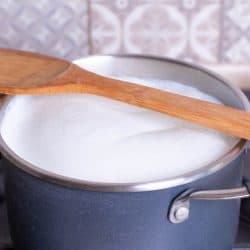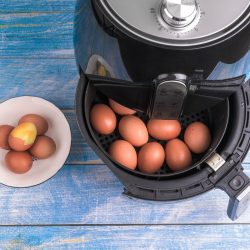Considering how everyone wants perfectly fluffy scrambled eggs, you are most likely wondering whether or not milk affects this. Look no further. We have researched all about milk in eggs and what makes them fluffy. Let's get right into it!
Contrary to popular belief, milk does not make scrambled eggs fluffy. Water is not the secret to making fluffy eggs either. Utilizing a whisk is the answer.
Continue to read to learn whether or not you should use water or milk in your scrambled eggs, make scrambled eggs fluffy, what happens when you add too much milk to scrambled eggs, and more.

What Makes Scrambled Eggs Fluffy: Water Or Milk?
Neither milk nor water makes scrambled eggs fluffy. Neither of them makes scrambled eggs fluffy because they water down the eggs. Water and milk make scrambled eggs more runny and thin than they would be without.
Are You Supposed To Add Milk To Scrambled Eggs?
Most people think you should add milk to scrambled eggs because it makes them fluffy. That could not be further from the truth. People started adding milk (or water) to their eggs to produce more food with the same amount of eggs.
Adding milk to scrambled eggs changes the consistency. Doing so does not add anything else to the dish. You can season your eggs with salt and pepper to taste.
If you add milk to your scrambled eggs, they will likely come out runny and too wet. That is why it is important to only use a small amount of milk in your scrambled eggs if you choose to use it. You should use one to two teaspoons of milk or water for every large egg.
If the eggs you are cooking are on the smaller end of the spectrum, you can add two eggs per tablespoon of liquid. Heavy cream makes scrambled eggs more like custard. Half-and-half will work in the place of heavy cream or sour cream if you would like to use it instead.
Silicone spatulas work the best to get the scrambled eggs off from around the edges of the skillet that you are using. They are flexible, so that aspect comes in handy. Another benefit of using silicone is that it is heat resistant.
Check out these silicone spatulas on Amazon.
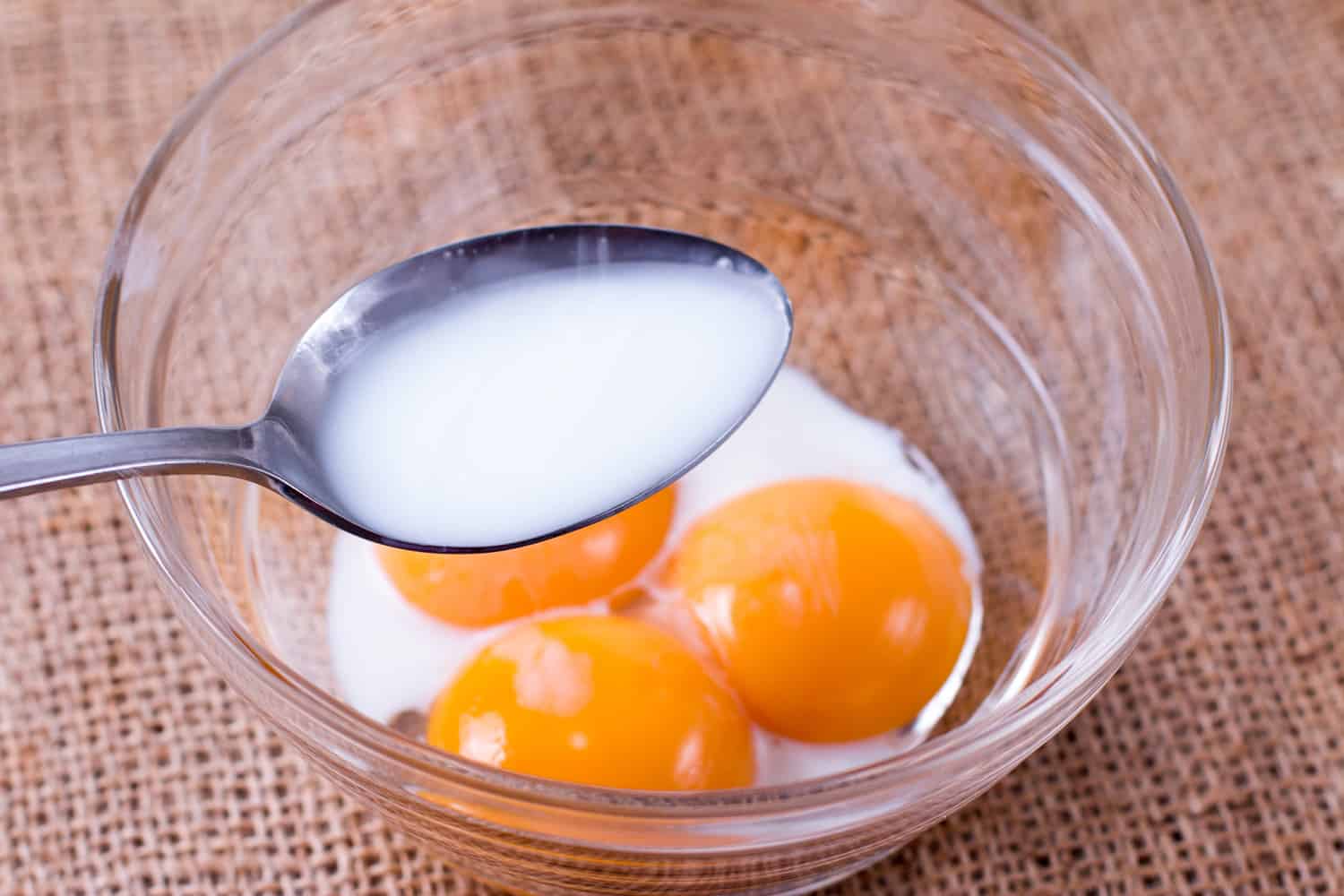
What Can You Use Instead Of Milk In Scrambled Eggs?
Possibly to your surprise, you can substitute butter for milk or water in eggs. Butter is the better choice because of the fat in it. The proteins in your scrambled eggs work differently when butter is involved. Adding butter to your scrambled eggs will decrease the likelihood of them becoming rubbery.
Water will work instead of milk if you feel the need to add something. It makes the eggs lighter. Make sure you don't use too much, though. Half of a tablespoon for every two eggs should suffice.
You can also add ingredients to scrambled eggs like you would an omelet. A few examples would be diced peppers, tomatoes, onions, chives, ham, or bacon. You can still make fluffy scrambled eggs even if you add extra ingredients.
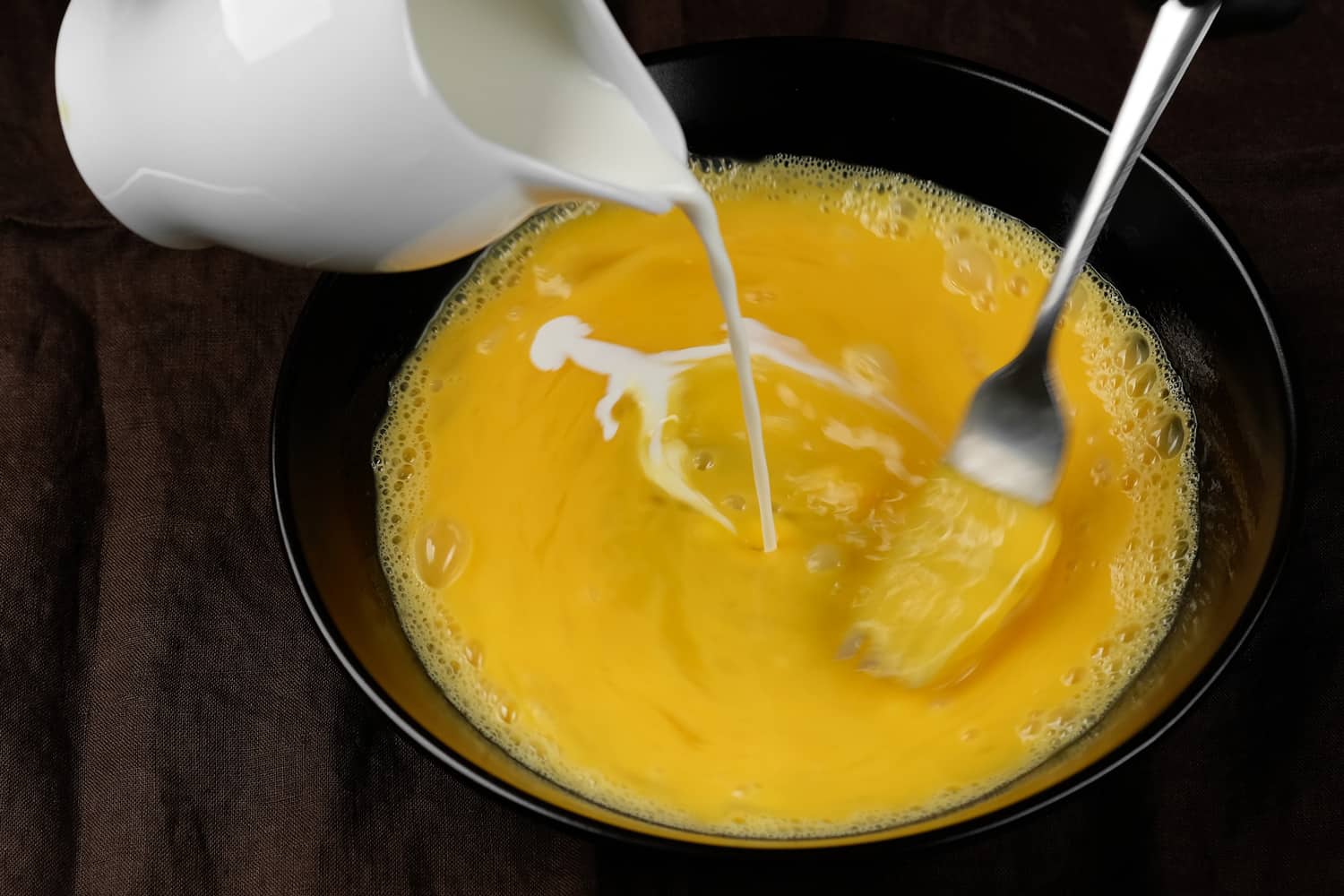
How Do You Make Scrambled Eggs Fluffy?
The trick to making fluffy scrambled eggs is quite simple. You need to use a whisk! When you whisk eggs, they become foamy. This is significant because the foam creates air pockets inside the eggs. That is exactly what you want.
You can whisk in shredded cheese if you make your scrambled eggs that have cheese in the mixture. Shredding your cheese from a block of cheese is the best way. Set your cheese out when you get your eggs out before you even scramble them so that the cheese can warm up to room temperature.
It only takes about one minute to whisk your eggs properly. When they are ready, you will notice the uncooked scrambled eggs in your bowl appearing yellow. The yolks should no longer be visible individually.
To avoid overcooking your eggs or cooking them too quickly, you should cook them on a low heat setting. The scrambled eggs may take a little longer to cook on low, but it will be worth the wait.
Check out this whisk on Amazon here.
What Happens If You Add Too Much Milk To Scrambled Eggs?
Putting too much milk in your scrambled eggs will dilute the mixture. This does the same thing as water; it essentially waters down the scrambled eggs. Too much milk or water in scrambled eggs will make them more likely to become overcooked.
Adding too much liquid to your scrambled eggs makes them cook faster. This makes them burn more easily. When your eggs burn, they stick to the bottom of the pan. It is crucial to avoid this by continuously mixing your scrambled eggs until they are done cooking.
So that you can be sure to add the correct amount of milk into your scrambled eggs, you should measure it. You can measure one tablespoon of cream cheese, heavy cream, or sour cream per two eggs. Adding any of those will make your eggs creamier.
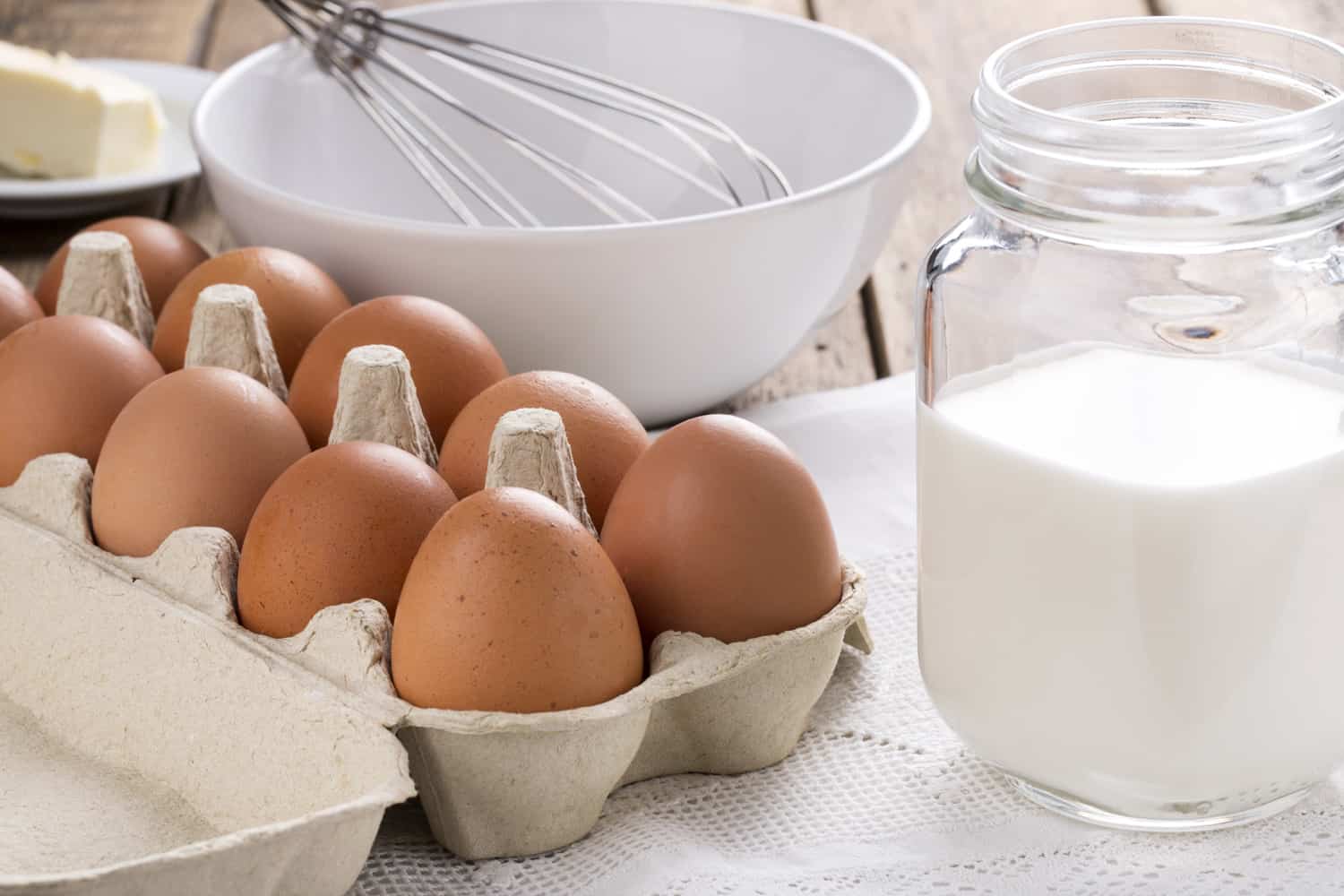
Can You Over-Mix Scrambled Eggs?
Yes, you can scramble eggs for too long. This makes them dry and flat instead of fluffy. When eggs are dry, they break up into smaller pieces. The proteins get worked too much if you over mix scrambled eggs. The goal is to make scrambled eggs that are fluffy and have not been over scrambled.
If you overcook scrambled eggs, you also risk that the eggs will become rubbery. That is not the texture that you will want in your scrambled eggs. Even watered-down eggs taste better when they are cooked fully but not overdone.
You can potentially whisk eggs for too long too. Try to whisk them just long enough that they are mixed. Don't overdo it, or they will be dense and flat.
How Can You Tell When Scrambled Eggs Are Done?
Typically, scrambled eggs begin to dry out when they are done cooking. The eggs are shiny before they are done cooking. You can tell they are done because the texture and firmness of the scrambled eggs change. There should not be any excess liquid when your eggs are ready.
Let your scrambled eggs start to foam on top before you start to scramble them. If you see bubbles, you are probably ready to scramble the eggs. Do not stir them or scramble them excessively. You will need to let the eggs cook for a few seconds, stirring them up.
You can scrape your eggs gently across the skillet with your silicone spatula. After that, you pick up the handle of your skillet; you should tilt it a little bit. When you tilt the skillet or pan, you will see the uncooked eggs fill the space that you just made at the bottom.
Cooking your scrambled eggs helps ensure that they are cooked evenly.
Turn the heat off when they no longer look runny but are still slightly wet. This is a good way to prevent the eggs from getting overdone. If you cook your scrambled eggs for too long, the moisture will be gone, and they will start to get tough rather than soft and fluffy.

To Wrap It All Up
You should not add milk to scrambled eggs unless that is your preference. If you decide to add milk to your scrambled eggs, only use a small amount.
The secret to making fluffy eggs is to use a whisk and whisk them for approximately one minute. Keep this in mind the next time you go to make scrambled eggs.
Made it to the end? Check out these super helpful related posts below!
Should You Whisk Scrambled Eggs? [The Secrets You Need To Know!]
How To Use A Cuisinart Immersion Blender
3 Of The Best Pans For Cooking Eggs




![A woman Preparing food in her home kitchen, whisking eggs, Should You Whisk Scrambled Eggs? [The Secrets You Need To Know!]](https://kitchenseer.com/wp-content/uploads/2021/08/A-woman-Preparing-food-in-her-home-kitchen-whisking-eggs-250x250.jpg)
![Mexican food recipes, Revoltillo de Huevos, Scrambled Eggs a la Dominicana, in portioned skillet, on dark stone table,copy space top view - Why Are My Scrambled Eggs Watery? [And How To Fix That]](https://kitchenseer.com/wp-content/uploads/2022/04/MEXICA2-250x250.jpg)
